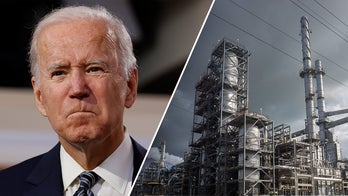At yesterday's Wall Street Summit in New York City, global CEO and corporate director Solomon "Sol" Trujillo gave a landmark, paradigm-shifting keynote speech called "Follow The Money," which put the $1.1 trillion dollar U.S. Hispanic market into a global perspective.
"The U.S. Hispanic market will soon be the 11th largest economy in the world," Trujillo said. Putting the Hispanic market in the same category as Brazil, Russia, India, and China (the BRIC countries), he pointed out that U.S. Hispanics actually have more per capita purchasing power than the BRIC countries as well as the Group of 20 (G-20) member nations South Africa, Mexico, Argentina, Korea, Indonesia, Saudi Arabia, Turkey, and Australia.
How did the G-20 countries earn their seats at the table? By growing their economies and creating wealth. U.S. Hispanics have done the same thing. By delivering economic growth and driving wealth creation, Hispanics have earned a seat at the table and deserve recognition for contributing to America’s competitiveness and America’s seat at the “global table." Economic power drives political power, not the other way around – and American Hispanics are amassing political influence by earning it through wealth creation.
Trujillo's global view comes from having served as CEO of Global 500 companies on three continents, including US West in North America, Orange in Europe, and Telstra in Australia. Serving on the boards of directors of global advertising giant WPP as well as major U.S. retailer Target Corporation also gives him a strategic vantage point on both the global and U.S. economies.
"Fortune 1000 companies are looking to international emerging markets for growth, but there is also a significant growth opportunity in their own back yard with a domestic emerging market: the U.S. Hispanic market," Trujillo said, observing that the 50-plus million domestic emerging market of Hispanic America would rank the 24th largest country in the world and is expected to grow by 83 million by 2050. He also drew parallels -- between international emerging markets and the U.S. Hispanic market -- such as high growth, relatively young average age, increasing productivity and per capita income, growing consumption, and expanding entrepreneurship.
Commissioner Luis Aguilar of the U.S. Securities and Exchange Commission commented, "The findings of the 2010 census are a stark reminder of the continuing changes to our nation's demographics. As Sol's presentation makes clear, the Hispanic population growth in both numbers and economic power is undeniable."
Clearly, Hispanics are a key catalyst for mainstream market growth, accounting for over half of U.S. population growth and for nearly half of all of the growth in U.S. consumer spending. How large is the Hispanic market across sectors? The speech included some eye-opening numbers.
Housing? $204 billion.
Transportation? $111 billion.
Food and Beverage? $84.2 billion.
Personal Insurance? $65.2 billion.
Utilities? $51.2 billion. And the list goes on.
Trujillo added that in addition to comprising a robust growth market in the U.S., Hispanics also have a competitive advantage in doing business with a $6.4 trillion dollar market of 575 million people in 21 countries in Latin America.
Trujillo’s conclusion may be a "no-brainer" to some but come as a surprise to others: "Follow the money and it will lead you to the U.S. Hispanic market."
Pablo Schneider is president of Corporate Creations International. He is also a public speaker and serves as a contributor to several national publications.
Follow us on twitter.com/foxnewslatino
Like us at facebook.com/foxnewslatino




